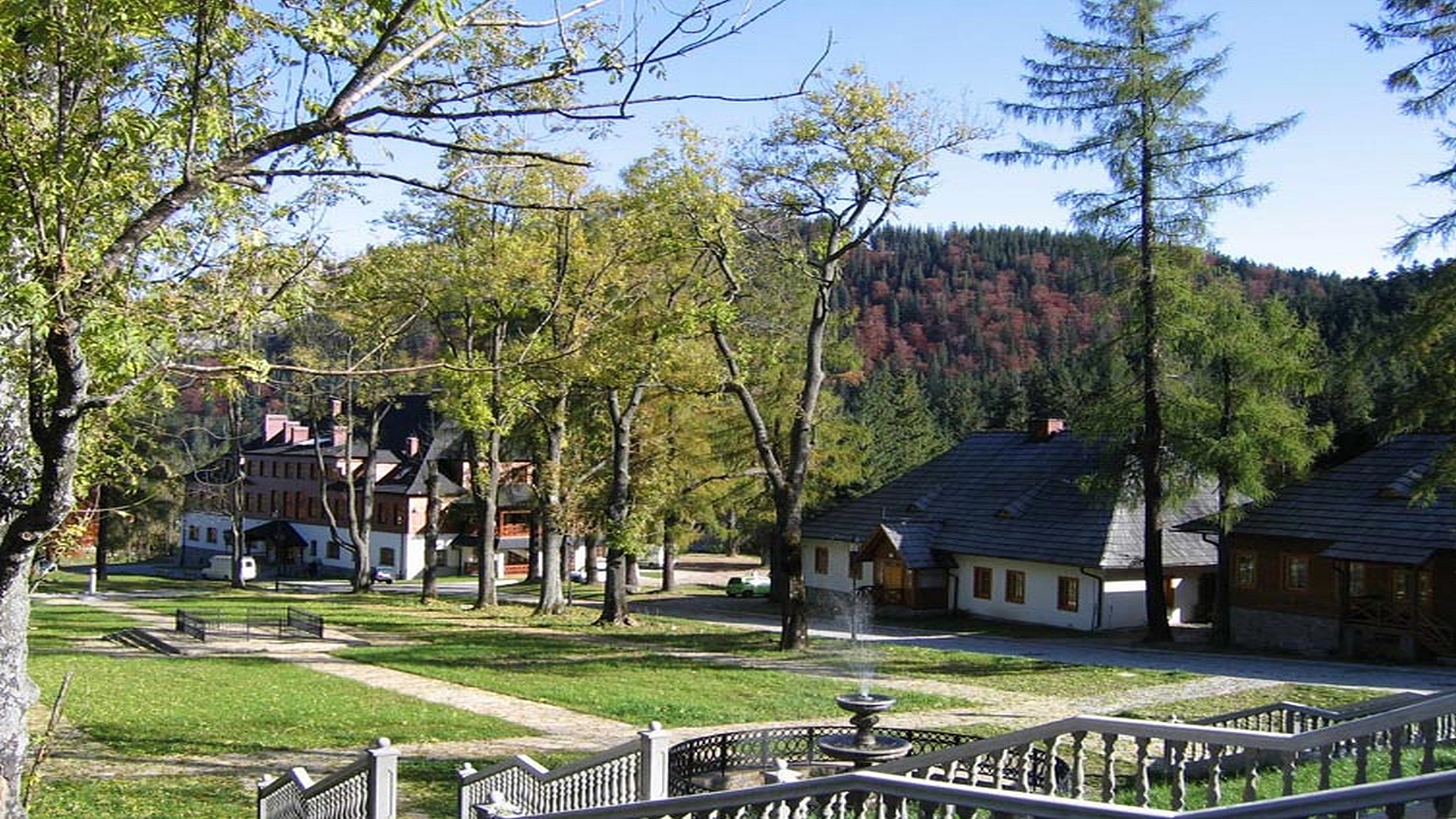The way to the heart of the Tatra National Park leads through Kuźnice, in the consciousness of the majority of tourists visiting Zakopane and the Tatra National Park functioning as the location of the bottom station of the cable line to Kasprowy Wierch. Kuźnice is part of Zakopane, located in the northern part of the river valley in the Western Tatras, the starting point for the trails to Kalatówki, Kondratowa and Mount Giewont, Mount Kasprowy and Hala Gąsienicowa.
Kuźnice boasts a rich history as its first written record dates back to the seventeenth century. Probably at the turn of the seventeenth and eighteenth centuries, a metallurgy centre was created here, as evidenced by the mention of Huty Hamerskie (steel mills) from the period of the reign of Augustus II of Saxony. The expanding mills became profitable and together with Nowy Targ County they were sold to Franciszek Rychter Pelikańczyk, the Lord High Steward of Krakow in the second half of the 18th century. In 1773, the management was appointed by the Austrian occupier, who took over the mills and decided to expand the Tatra Factory. However, due to the exhaustion of iron ore in 1791, the production of pig iron was ceased. Kuźnice passed into private hands and changed owners until it was finally acquired by the Hungarian John Vincent Homolacs, and Kuźnice began flourishing as an industrial centre.
Following the discovery of new iron ore deposits, John’s son – Emanuel expanded steel works, but his efforts were frustrated by lack of fuel for furnaces. In 1824, having divided them into quarters, Austrians decided to sell the goods of Nowy Targ, and it was when Emanuel Homolacs bought two of them (Zakopane and Białczańska). In 1833, the Homolacs (Emanuel’s nephew, Edward, and his wife Clementine) settled in their manor house in Kuźnice. The thriving steel works achieved the title of one of the greatest contemporary centres in this part of Europe. As a result, the owners could be active in other areas and so the manor house in Kuźnice began to play a cultural role. Eminent personalities visiting the Tatras, stopped here. In mid-nineteenth century a garden was created before the manor, and in it a fountain, which is partially preserved to this day. At the beginning of the second half of the 19th century, Edward Homolacs began to create a nature collection in Kuźnice thanks to Anthony Kocyan, the forester in Homolacs’ demesne, who was adding objects to the collection (it can be seen in Kuźnice in the renovated Coach House).
Along with the sale of assets in 1870, began a period of decline of Kuźnice as an industrial centre. Auctioned off goods were handed over to Count Władysław Zamoyski. At the end of the nineteenth century, the School of Domestic Work for Women was moved to Kuźnice, run by Jadwiga Zamoyska nee Działyński, the Count's mother. To fulfil the school’s aspirations for self-sufficiency, gardens of flowers, fruits and vegetables were formed in Kuźnice. Count Zamoyski donated a fortune to charity establishing a foundation called Zakłady Kórnickie, which fell into financial difficulties due to poor management and as a result was partially sold. The school was transformed into the Economic Secondary School, and closed in 1948.
In the years 1951-2003, the former manor house functioned as a hospital complex, administered by the Specialist Rehabilitation and Orthopaedic Centre for Children and Youth, which in 1997 was transformed into the Jagiellonian University's Clinic for Orthopaedics and Rehabilitation of Children and Youth in Zakopane. The buildings that were in poor condition were transferred to the Tatra National Park in 2003 under the Nature Conservation Law Act.
European Union funds covered a large part of the the revitalization cost of the manor park located in Kuźnice (TPN) via the Integrated Operational Programme for Regional Development. As part of the work, a 19th century granary was changed into a temporary exhibition hall, a coach house was transformed into a history museum of Kuźnice, the foundations of the Homolacs’ manor were rebuilt, and the officials’ mansion from the nineteenth century and the garden foundations were restored. The work was carried out in 2006-2008. The restored park foundations are passageways and alleys with lighting and a fountain from the Homolas’ time.





